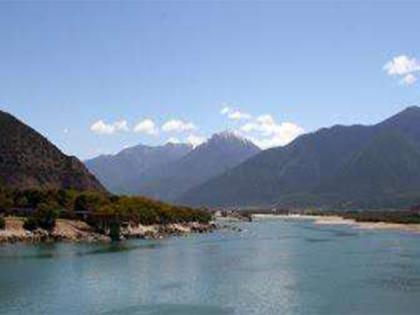New dam project may weaponise water flow to China's advantage: Report
By ANI | Updated: August 7, 2025 09:09 IST2025-08-07T09:02:08+5:302025-08-07T09:09:50+5:30
Beijing [China], August 7 : The Yarlung Zangbo dam project, which China calls an initiative part of its renewable ...

New dam project may weaponise water flow to China's advantage: Report
Beijing [China], August 7 : The Yarlung Zangbo dam project, which China calls an initiative part of its renewable energy transition has revealed concerning and calculated geopolitical motivations with the project's location, scale, and timing, an opinion piece in Geopolitical Monitor stated
The project, which will eclipse the Three Gorges Dam and produce roughly 70 gigawatts of power, emerges at a moment of heightened regional tensions.
China's decision to proceed with construction reflects a keen understanding of the evolving dynamics of water diplomacy in South Asia and its readiness to weaponise rivers, says the Geopolitical Monitor.
The downstream implications of China's dam construction extend across multiple countries and affect hundreds of millions of people. The Yarlung Zangbo transforms into the Brahmaputra upon entering India, where it sustains approximately 130 million inhabitants and six million hectares of agricultural land throughout Assam, Arunachal Pradesh, and additional northeastern provinces, as per Geopolitical Monitor.
India's response through the planned Siang Upper Multipurpose Project demonstrates its recognition that defensive measures have become essential, though it has its own limitations. India's own project faces environmental opposition and local resistance, for example, highlighting the democratic constraints that are less prominent in authoritarian countries like China. Additionally, the 11,000-megawatt dam planned for Arunachal Pradesh, while substantial, cannot fully counteract China's upstream advantages.
The fundamental asymmetry between China's position as an upstream hegemon and India's defensive posture suggests that Beijing will therefore retain strategic advantages regardless of any Indian countermeasures, Geopolitical Monitor reported.
Earlier in July, in response to concerns expressed by India over the Yarlung Zangbo hydropower project, Chinese Foreign Ministry spokesperson Guo Jiakun said that the project's construction falls within China's sovereign territory. He said, that China has cooperated with relevant downstream countries on hydrological monitoring, as well as flood prevention and mitigation, and has carried out necessary communications concerning the hydropower project.
Since 2000, Beijing has built or authorised almost 193 hydroelectric installations in Tibet, with approximately 80 per cent categorised as major or massive-scale projects; over 60 per cent of these developments remain in planning or preliminary phases, yet if realised, they would displace more than 1.2 million residents and eliminate countless sacred locations, as per Geopolitical Monitor.
Disclaimer: This post has been auto-published from an agency feed without any modifications to the text and has not been reviewed by an editor
Open in app